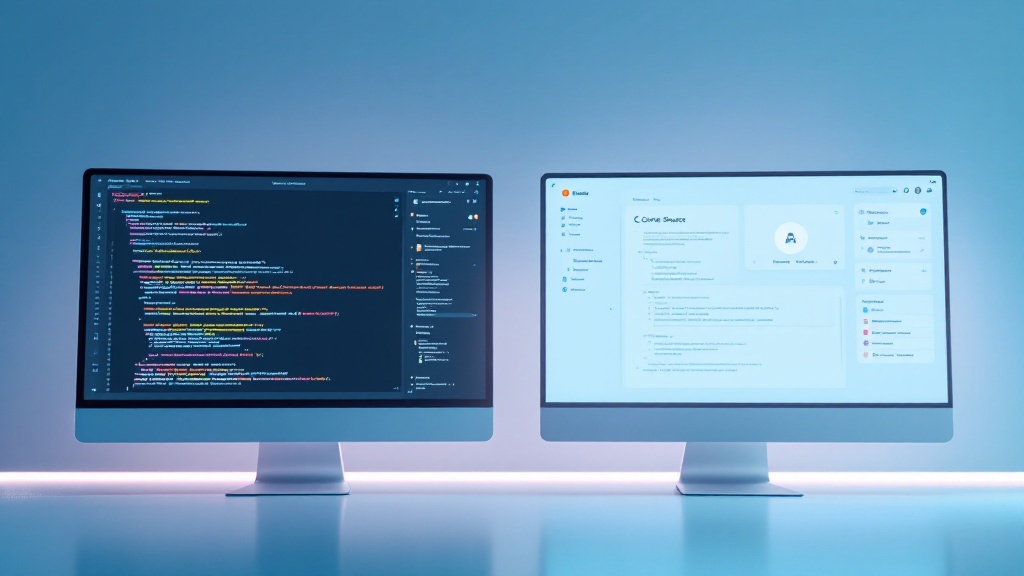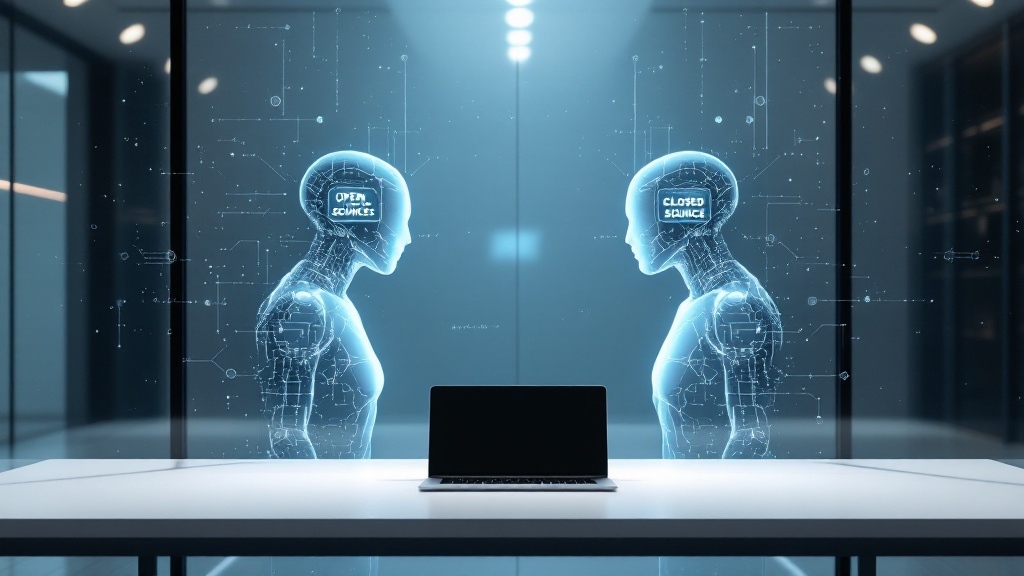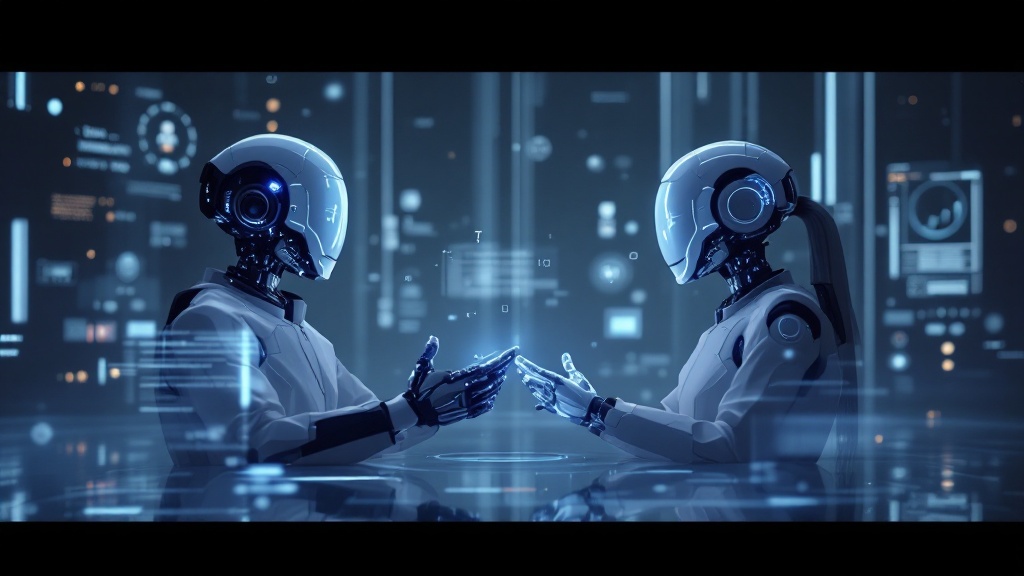Introduction
Artificial intelligence is rapidly becoming one of the most influential forces shaping industries, societies, and economies. But as AI continues to advance, a significant debate is emerging about the future of AI models: open-source versus closed-source. Will open-source AI — where the code is made publicly available — ultimately triumph, or will closed models controlled by a few powerful corporations remain dominant?
In this blog, we’ll explore the key differences between open and closed AI models, the advantages and challenges of each, and the factors that will determine whether open-source AI has what it takes to win the battle.

Understanding Open-Source vs. Closed-Source AI
At its core, the difference between open-source and closed-source AI lies in how the software is distributed and maintained.
- Open-Source AI: Open-source AI models are made available to the public, allowing anyone to use, modify, and improve upon the code. This approach fosters collaboration, transparency, and rapid innovation. Communities of developers can access the underlying architecture of the model and contribute to its development, ensuring that it evolves according to a diverse set of needs and perspectives.
- Closed-Source AI: On the other hand, closed-source AI models are proprietary systems developed and controlled by private companies. These models are often behind a paywall or restricted through APIs (Application Programming Interfaces), meaning users don’t have access to the underlying code. While closed-source models are often highly polished and optimized, they tend to lack the same level of transparency and flexibility.
Both approaches have their strengths, but each comes with significant trade-offs. Let’s dive deeper into these two types of AI to understand how they differ and the implications for the future of AI. The debate between open-source and closed AI models is deeply connected to the foundational workings explained in How Does Large Language Models Work.

The Advantages of Open-Source AI
Open-source AI has been rapidly gaining ground for several important reasons:
- Transparency and Trust – Anyone can inspect open-source code, fostering trust around data privacy, bias, and fairness. Flaws can be spotted and fixed quickly thanks to public access.
- Collaboration and Innovation – Global collaboration drives rapid innovation. Open-source projects like TensorFlow, PyTorch, and GPT models have thrived because contributors continually enhance them.
- Cost-Effectiveness – Many open-source tools are free, giving startups, researchers, and smaller businesses access to powerful AI capabilities without the high costs tied to proprietary solutions.
- Flexibility and Customization – With access to the source code, users can modify open-source models to fit their unique needs — a major advantage for industries requiring tailored AI solutions.
Understanding the future of conversational AI involves insights from GPT AI The Future of Conversational Tech, which touches on how different AI models evolve.

The Appeal of Closed-Source AI
Despite the open-source momentum, closed-source AI still leads many markets:
- Control and Quality Assurance – Companies maintain strict control over development, resulting in optimized, thoroughly tested products that offer greater reliability and fewer bugs.
- Monetization and Business Models – Closed models fuel revenue through subscriptions and paid access, funding continuous research, upgrades, and customer support.
- Proprietary Advantages – Protecting intellectual property and offering exclusive features gives closed-source AI a competitive edge. These models often provide a smoother, more polished user experience.
The rise of personalized AI, whether open or closed, is shaping industries as explored in The Rise of Personalized AI How Custom GPTs Are Shaping Industries.

Key Challenges Facing Open-Source AI
While open-source AI offers many advantages, it’s not without its challenges:
- Security Concerns – Since open-source models are publicly available, they are more vulnerable to security breaches. Malicious actors could exploit vulnerabilities in the code to cause harm or misuse the technology. While the community can address and patch vulnerabilities, the openness of the code can still pose risks, particularly in sensitive applications.
- Lack of Support and Resources – Open-source projects often rely on community contributions, which can sometimes lead to a lack of dedicated support. Users may struggle to find timely solutions to technical problems, particularly in complex applications. In contrast, closed-source models often come with robust customer service and technical support.
- Fragmentation – The open-source nature of AI can lead to fragmentation, with different versions of a model being developed for specific use cases. While this fosters innovation, it can also create a lack of standardization, making it difficult for users to adopt a consistent AI model across different projects or platforms.
Comparing AI’s ability to scale and learn from feedback can be better understood through The Power of Data Scaling in Reinforcement Learning from Human Feedback.

The Future of AI: Will Open-Source Win?
As AI evolves, the debate between open-source and closed-source models continues. Here are key factors shaping the future:
- The Rise of AI Democracies – With growing recognition of the benefits of open-source AI, we may see a shift toward a more decentralized model. Open-source AI could empower individuals and organizations, regardless of resources, fostering a level playing field and driving innovation.
- Enterprise Adoption – Despite open-source AI’s potential, many enterprises still rely on closed-source models for critical applications due to concerns over reliability and support. However, as the open-source community improves, its adoption in corporate environments could increase.
- Hybrid Models – A hybrid approach might emerge, combining the strengths of both models. Businesses could use open-source AI for customization and innovation, while leveraging closed-source solutions for specialized features, quality assurance, and support.
How AI-powered tools are transforming business growth regardless of model openness is detailed in How AI-Powered Tools Can Help You Scale Your Business Faster.

Conclusion
The battle between open-source and closed-source AI models is far from over, but both sides have clear advantages. Open-source AI fosters innovation, accessibility, and collaboration, offering a more democratic approach, while closed-source models provide reliability, security, and enterprise-grade support. As both models evolve, we may see a blend of the two, where open-source AI powers customization and experimentation, while closed-source solutions offer specialized features and robust support.
Ultimately, the future of AI will likely involve a balance between open and closed models, with both playing essential roles in different industries and use cases. The key will be in leveraging the strengths of each approach to create more efficient, adaptable, and innovative AI systems for the future.

Leave a Reply